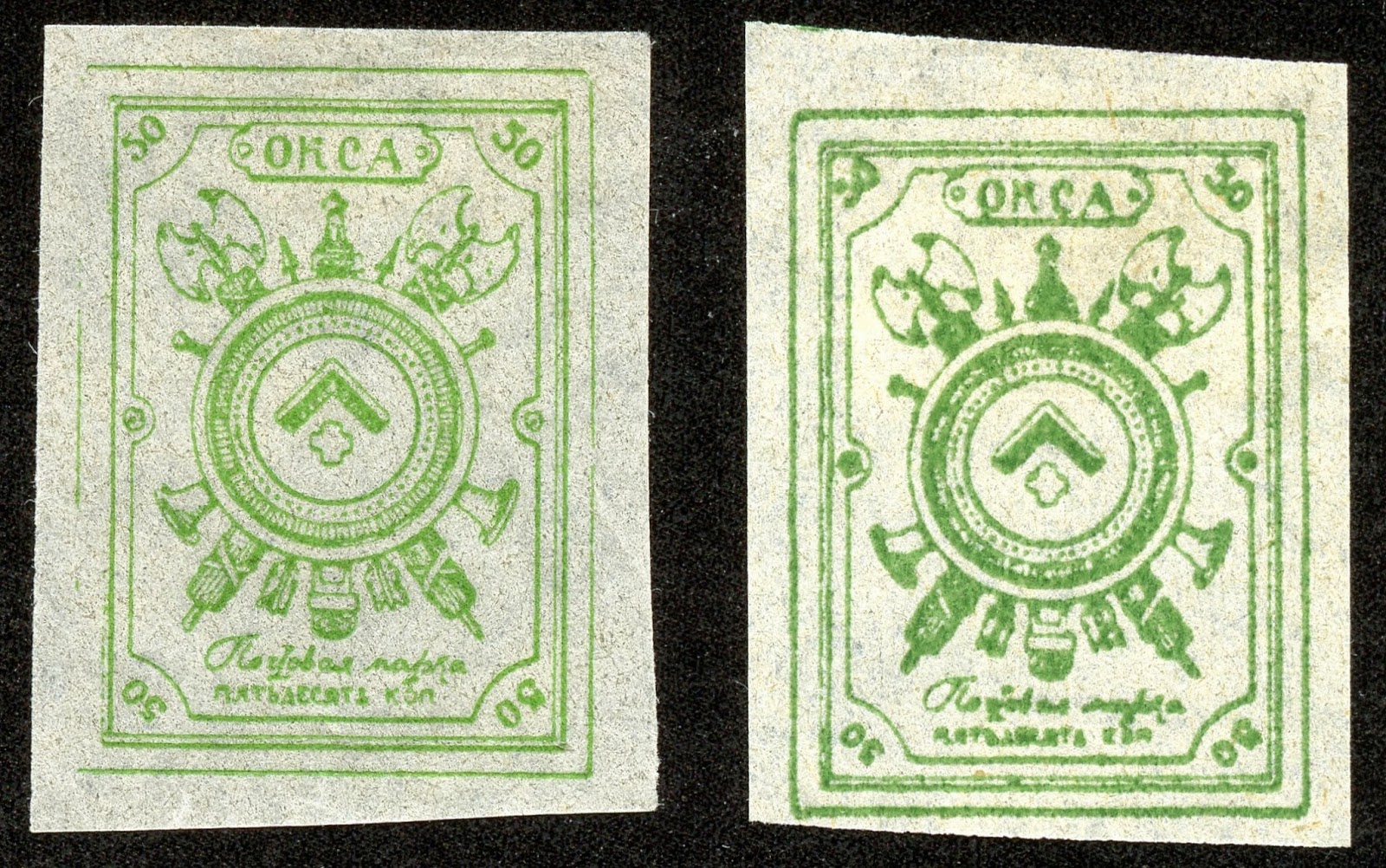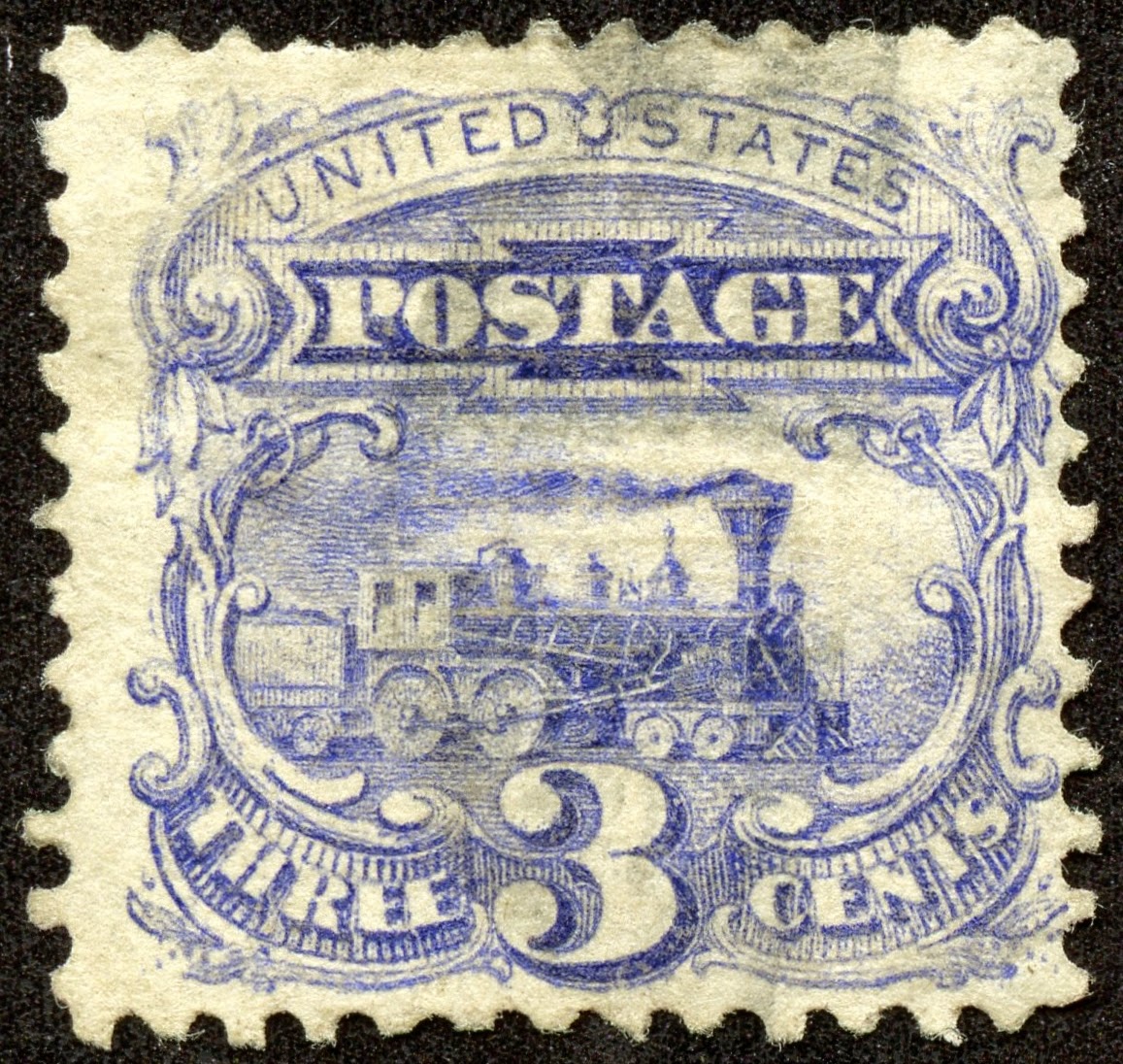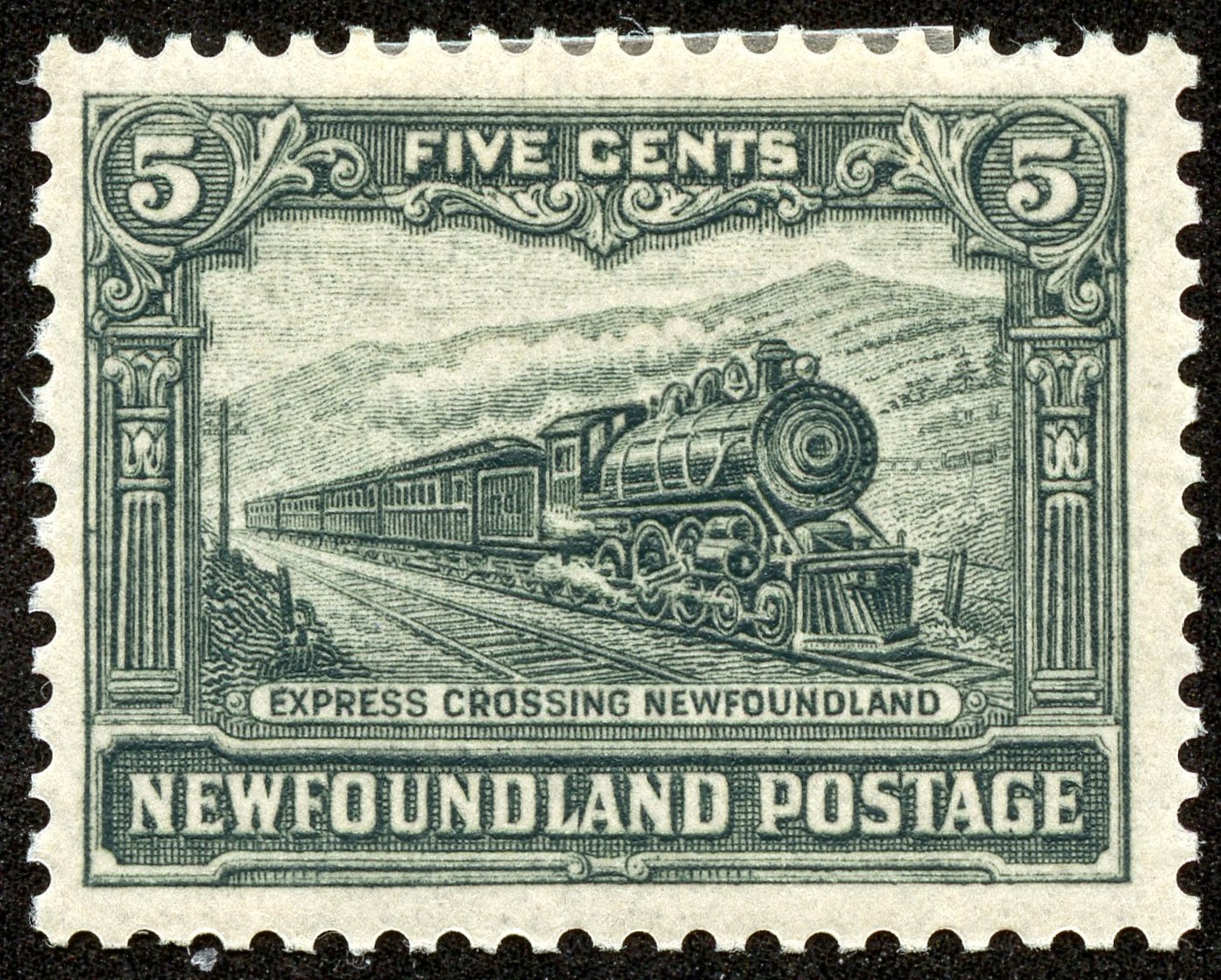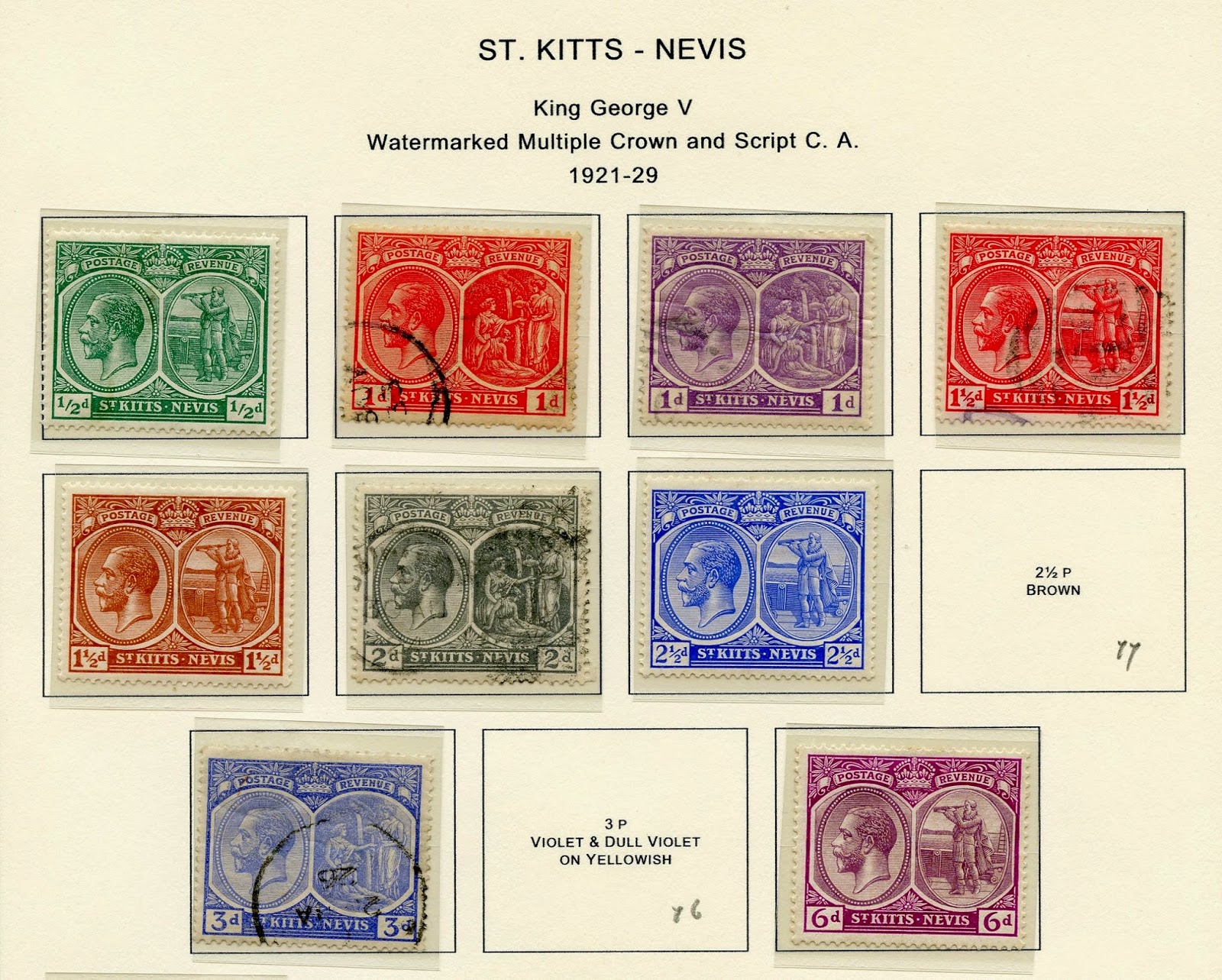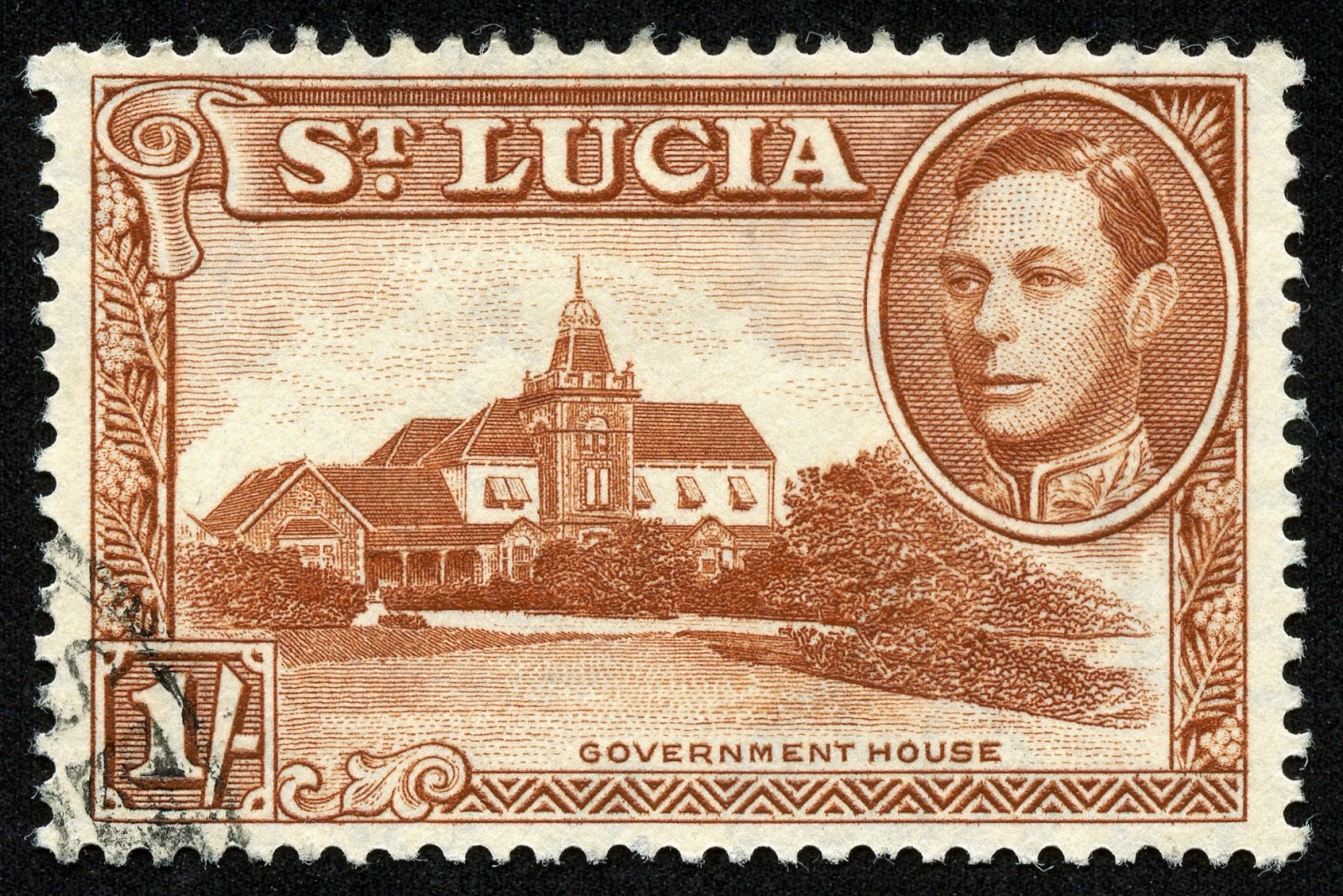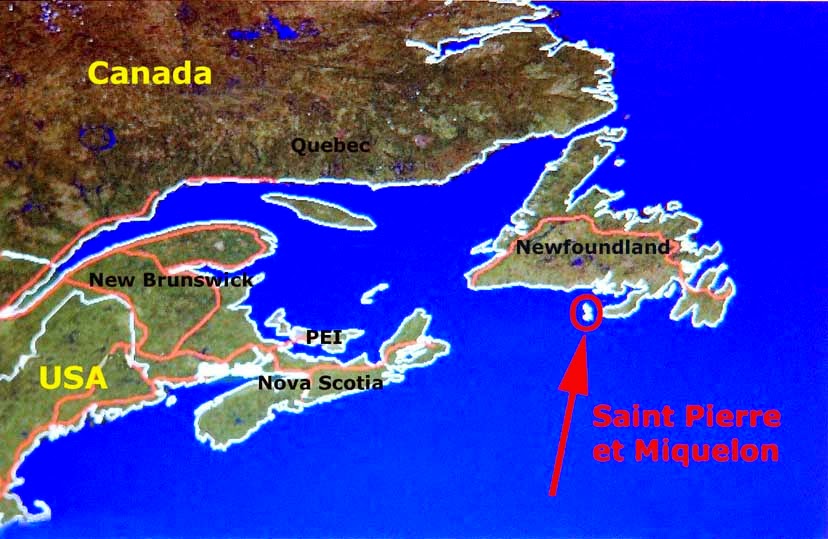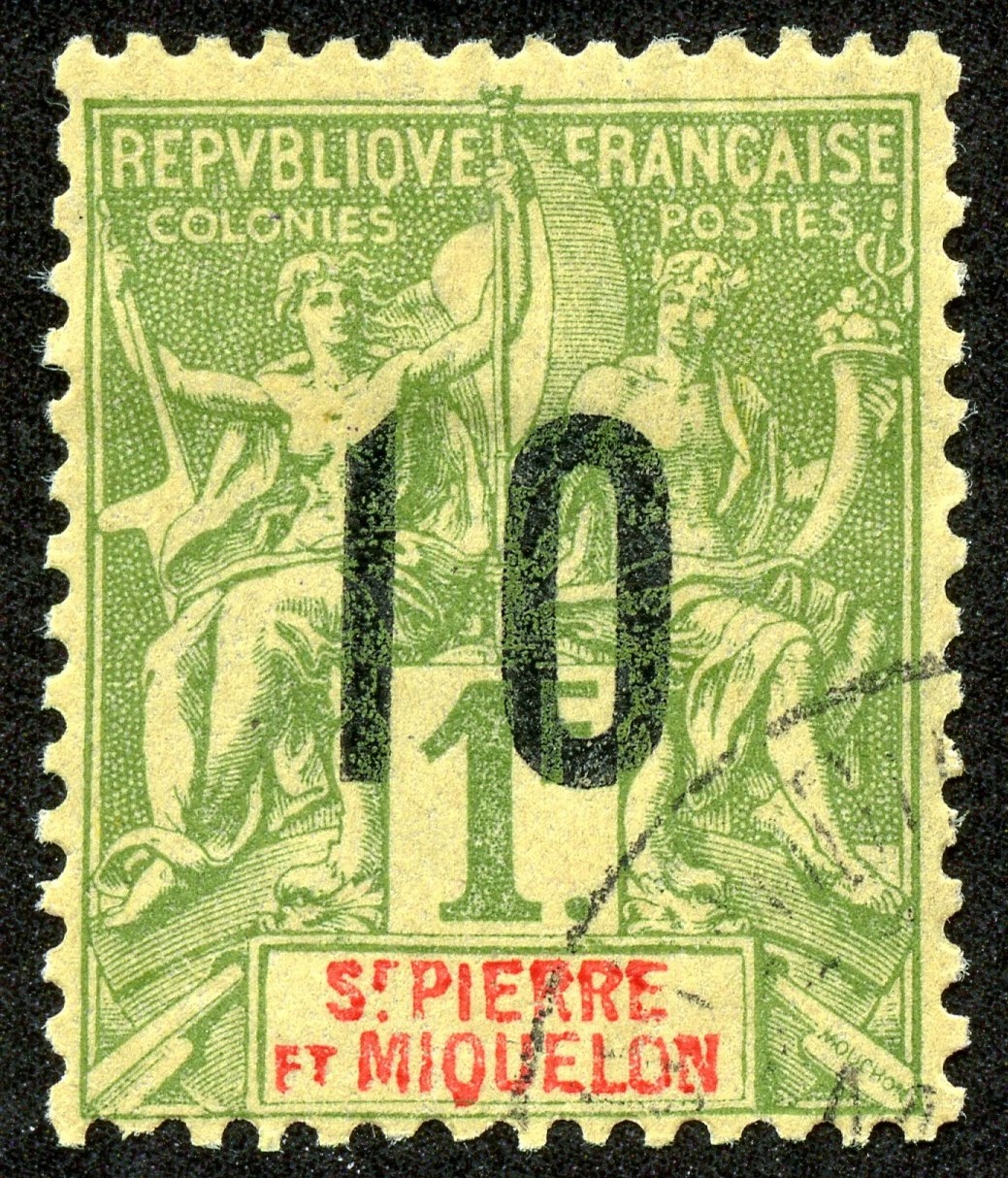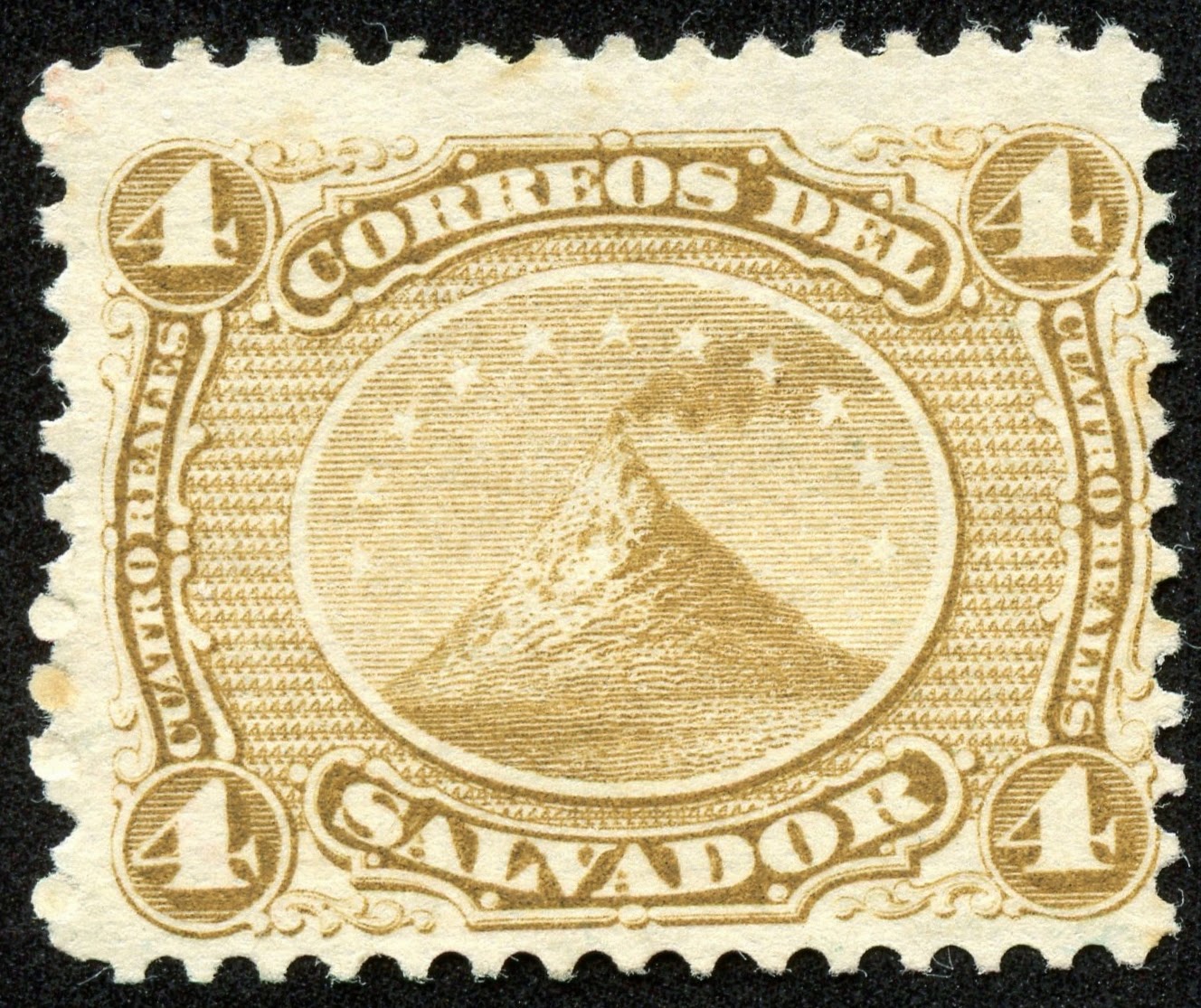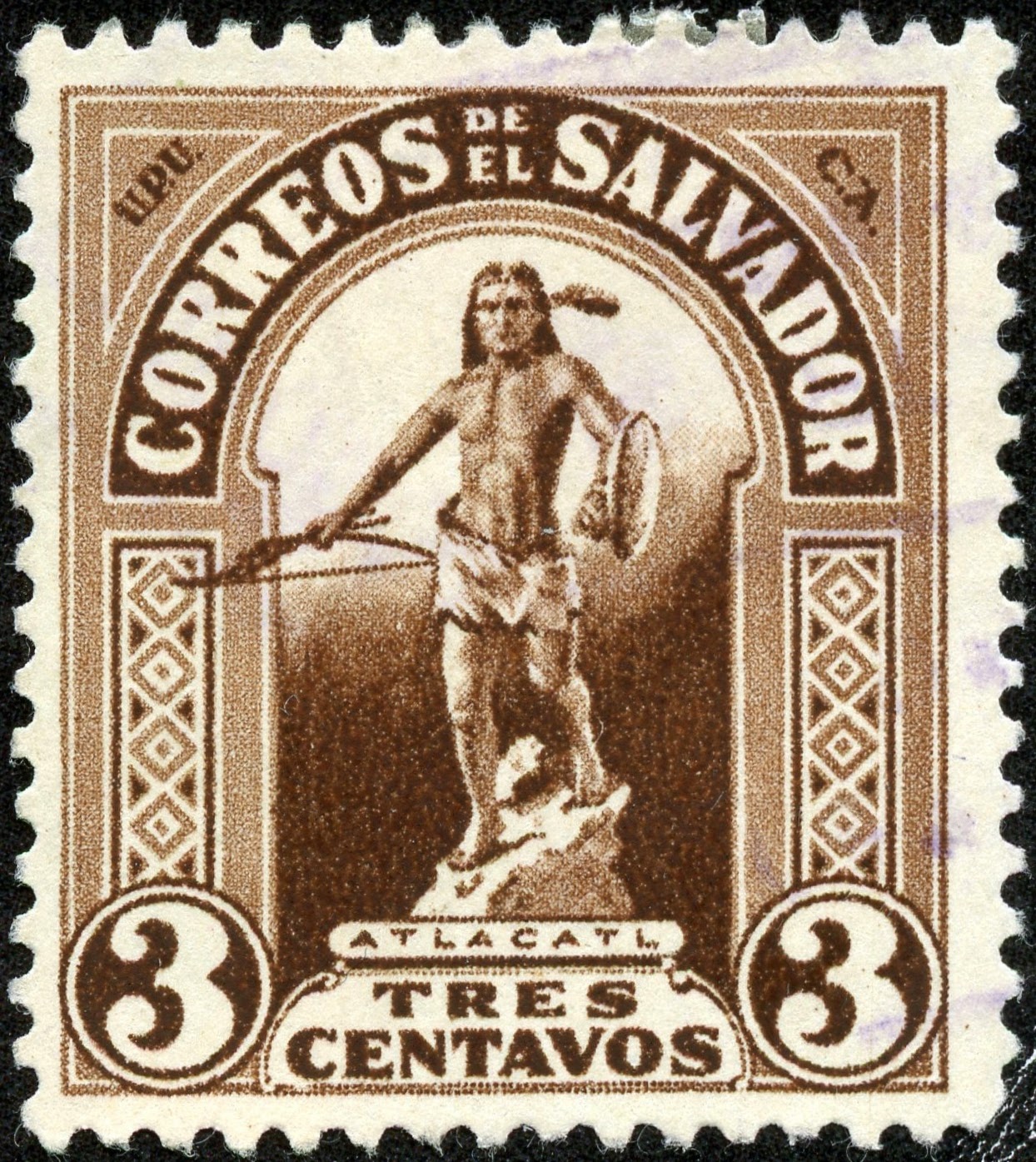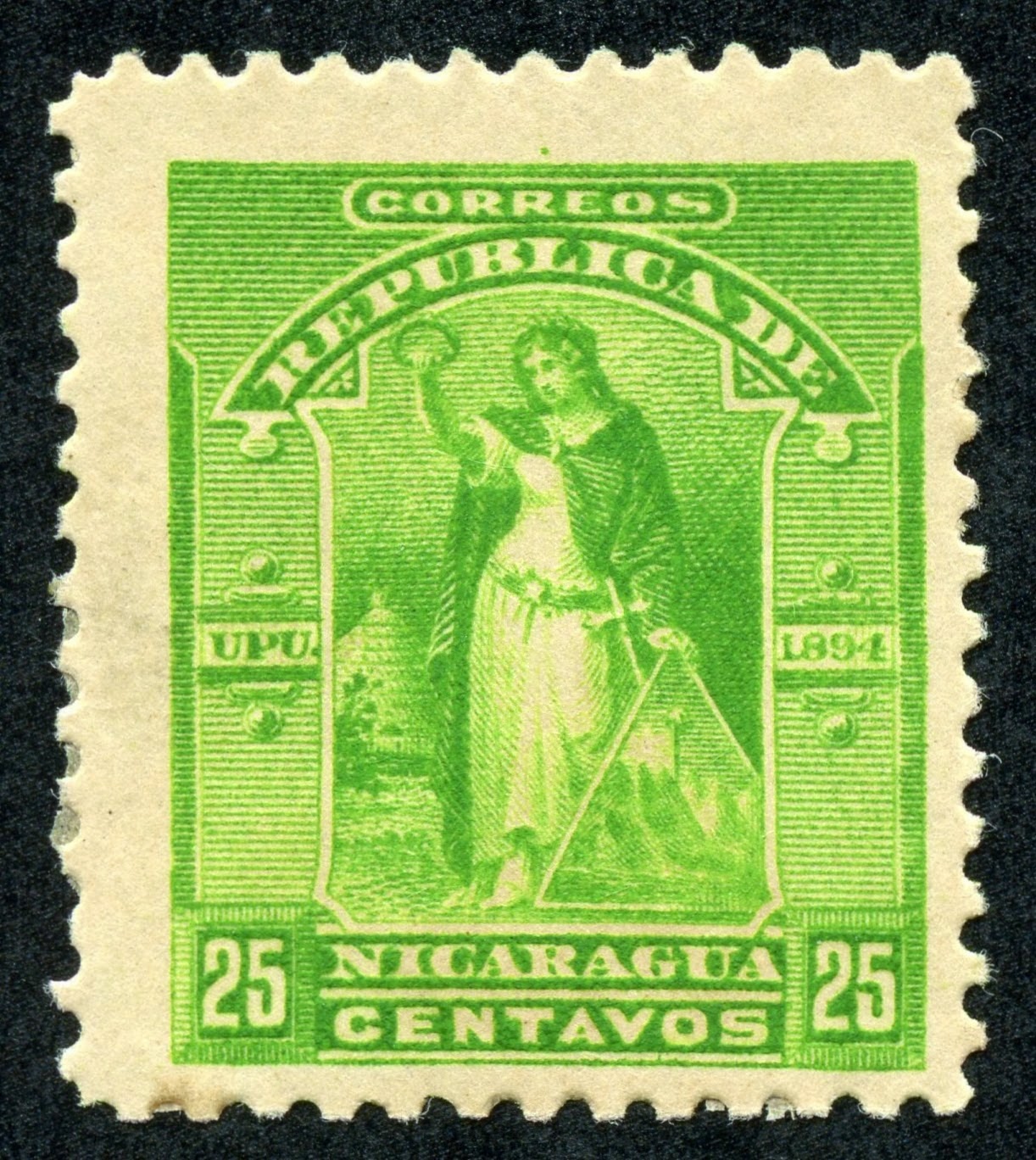1866 Scott 20 3k black & deep green "Coat of Arms"
Russian Empire
Quick HistoryThe Russian Empire, an absolute monarchy from 1721 to 1905, and then a constitutional monarchy until the February and October revolutions of 1917, was ruled by the Tsars. The heavily rural and economic backward lands were still worked by serfs until they were liberated in 1861. The Industrial Revolution came late to Russia, compared to Western Europe, and the stunning defeat in the Russo-Japanese War (1904-05) was a severe blow to the Tsarist government.
Russian Empire 1914
Tsar Nicholas II was the last Emperor of Russia, Grand Duke of Finland, and titular King of Poland, and ruled absolutely from 1894 to 1905, and then constitutionally until his abdication in March, 1917.
Tsar Nicholas II
Nicholas II, who actually was of primary German decent, was related by blood to much of European royalty: King Christian IX of Denmark (Grandparent), King Frederick VII of Denmark, George I of Greece, Queen Alexandra ( consort of King Edward VII), Kaiser Wilhelm II of Germany, King George V, King Haakon VII and Queen Maud of Norway, King Constantine I of Greece, and King Frederick William III of Prussia.
But ill winds were blowing, primarily of the Bolshevik kind, and all the relationship royalty could not save him and his wife, his son, his four daughters, the family's medical doctor, the footman, the maidservant, and the family's cook, who were all executed on the night of July 16/17, 1918.
Russia (yellow) -Russian Soviet Federative Socialist Republic- within the U.S.S.R.
The Russian Soviet Federative Socialist Republic was a sovereign state from 1917-22, then the leading member of the Soviet Union (USSR) until 1991. The USSR was a Marxist-Leninist single party state lead initially by Vladimir Lenin and the Communist Party, with Moscow as the capital.
The capital had been St. Petersburg between 1730-1917, and the population of Russia was 181,000,000 in 1916.
Between 1917-22, there was a civil war between pro-revolution Reds and the counter-revolution Whites. The Reds were victorious, and the Soviet Union was formed with the unification of the Russian, Transcaucasian, Ukrainian, and Byelorussian Republics.
The USSR also included Armenia, Azerbaijan, and Georgia, who had issued their own stamps.
After Lenin's death in 1924, Joseph Stalin ruled with a totalitarian iron fist until his death in 1953.
The history of Russia could be expanded to the size of a Tolstoy novel. The classical collector may want to become more familiar with it, especially the revolutionary 1917-22 era.
1913 Scott 100 70k yellow green & brown
"Michael Feodorovich"
Into the Deep BlueThe 2011 Scott Classic Specialized 1840-1940 catalogue has, for Russia 1857-1943, 1415 major descriptive numbers. Of those, 661 are CV <$1-$1+, or 46.7%. Of interest, commemoratives of the 1930s and air post issues generally have a higher CV.
Russia, like the U.S. or China, is a world to itself, and one could spend a lifetime studying the philatelic output. I should have 3-4 blog posts devoted to the stamps of Russia, but I will reluctantly have only one. So with the WW classical collector in mind, I will mostly focus on the trickier earlier Russian Empire issues.
For the last part, we will look at some forgeries of the 1919 Army of the North issues.
A closer look at the stamps and issues
100 Kopecks = 1 Ruble
1865 Scott 12 1k black & yellow "Coat of Arms"
Wove Paper
In order for the classical collector to successfully categorize the earlier typographic stamps of the Russian Empire, awareness of several things are necessary.
* Paper (Whether wove, horizontally laid, or vertically laid.)
* The Posthorn motif and the absence or presence of "Thunderbolts".
* Watermarks- or lack thereof.
The first stamps of the Empire all show the "Coat of Arms" design (1857-1912), and naturally have Cyrillic script, which is somewhat difficult for collectors from Roman script countries to interpret.
Therefore, attention to detail is advised. ;-)
The 1865 six stamp issue- shown above- is of wove paper and is unwatermarked.
* Paper (Whether wove, horizontally laid, or vertically laid.)
* The Posthorn motif and the absence or presence of "Thunderbolts".
* Watermarks- or lack thereof.
The first stamps of the Empire all show the "Coat of Arms" design (1857-1912), and naturally have Cyrillic script, which is somewhat difficult for collectors from Roman script countries to interpret.
Therefore, attention to detail is advised. ;-)
The 1865 six stamp issue- shown above- is of wove paper and is unwatermarked.
No Thunderbolts across Post Horns
In addition, the earlier issues (1857-1888) show no thunderbolts across the Post Horns. This is very useful to separate out the earlier from the later (1889-1912) issues.
1866 Scott 19 1k black & yellow "Coat of Arms"
Horizontally Laid Paper, Wmk 168
Looks like the same stamp as the preceding one, doesn't it?
The 1866-70 six stamp issue is characterized by the horizontally laid paper, and to a lesser extent, by the wmk 168.
The 1866-70 six stamp issue is characterized by the horizontally laid paper, and to a lesser extent, by the wmk 168.
Horizontally Laid Paper
Wmk 168- Wavy Lines noted
The horizontally laid paper for the Russian issues will show horizontal parallel dark lines on the back of the stamp- often quite obvious, and watermarking fluid is usually not needed.
There is also a watermark- here a wavy line is seen above the pencil mark.
There is also a watermark- here a wavy line is seen above the pencil mark.
Wmk 168 "Cyrillic EZGB & Wavy Lines"
The watermark is wmk 168 "Cyrillic EZGB & wavy Lines". Here the wmk is brought out by using watermark fluid.
The watermark is present in the issues produced from 1866-1906. It is usually not critical that the wmk be found for these issues for identification purposes.
The watermark is present in the issues produced from 1866-1906. It is usually not critical that the wmk be found for these issues for identification purposes.
1875 Scott 30 20k blue & orange
Horizontally Laid Paper
Between 1875-82, another issue of five stamps was produced using horizontally laid paper. Note the lack of thunderbolts across the post horns.
Horizontally Laid Paper
Flipping the 20k blue & orange stamp over, note the easily determined horizontally laid paper.
1883 Scott 34 5k red violet
"Imperial Eagle and Post Horns"
Horizontally Laid Paper
A new issue of eight stamps using two newer designs was released between 1883-88.
One significant change was, prior to 1882, the 1k, 2k, 3k, & 5k had small numerals in the background (look at the 1k & 3k examples shown earlier for this post), while this issue for these denominations have a background of network, like the higher denominations.
Note the issue has horizontally laid paper, and no thunderbolts across the post horns.
One significant change was, prior to 1882, the 1k, 2k, 3k, & 5k had small numerals in the background (look at the 1k & 3k examples shown earlier for this post), while this issue for these denominations have a background of network, like the higher denominations.
Note the issue has horizontally laid paper, and no thunderbolts across the post horns.
1889 Scott 41 4k rose & Scott 42 10k dark blue
"Imperial Eagle and Post Horns with Thunderbolts"
Horizontally Laid Paper
In 1889, a new five stamp issue was produced- with thunderbolts across the post horns.
With Thunderbolts across Posthorns
Here it is- easy, No? The 1889-1812 issues all show the thunderbolts across the post horn motif.
1889 Scott 47 2k green
With Thunderbolts across Posthorns
Horizontally Laid Paper
Between 1889-92, a nine stamp issue with thunderbolts across the post horns and horizontally laid paper was produced. The definitive factor here is the horizontally laid paper.
1902 Scott 56 2k yellow green
Vertically Laid Paper
In 1902-06, a thirteen stamp issue was released, but on vertically laid paper.
An important way to tell the difference with the preceding 1889-92 issue is... the vertically laid paper!
This also marks the end of the use of the wmk 168 "Cyrillic EZGB & wavy Lines".
An important way to tell the difference with the preceding 1889-92 issue is... the vertically laid paper!
This also marks the end of the use of the wmk 168 "Cyrillic EZGB & wavy Lines".
1909-12 Scott 80 14k dark blue & carmine
Vertical Lozenges of Varnish on Face
Wove paper, Unwatermarked
Then, a 1909-12 fifteen stamps issue was produced with two new designs included. But eight stamps used preceding designs, one of which is illustrated here. How to tell the difference?
This issue is on wove paper, and is unwatermarked!
Also, the stamp is shiny, as vertical lozenges of varnish were used on the face.
Finally, a 1917 seventeen stamp issue was produced by the provisional government during the civil war using types of the 1889-1912 issues. These stamps have wove paper, and are imperforate.
Russia 1909-12 Scott 79 10k dark blue
Finland 1911 Scott 80 20p deep blue
Be aware that there are many similarities between Russian and Finnish stamps of the era. The Finnish stamps have "dot in circle" devices, or are inscribed "Markka", Markkaa", "Pen", or "Pennia".
For more on the differences between Russian and Finnish stamps of the era, see my Finland 1856-1917 blog post.
Finland 1911 Scott 80 20p deep blue
Actually, the Finnish 1911 20p deep blue from the preceding scan is not a great print example. Here is a better one.
For more on the differences between Russian and Finnish stamps of the era, see my Finland 1856-1917 blog post.
1913 Scott 92 7k brown "Nicholas II"
A nice 17 stamp typographic issue with all different designs was released in 1913. The issue features the tsars back to Peter I. The ill-fated and last Tsar Nicholas II is shown here on the 7k brown.
1915 Scott 107 20k olive green ""Alexander I"
Thin Cardboard, without Gum
Between 1915-1917, some of the stamp images from the 1913 issue were put on thin cardboard, and used as paper money! They are listed in the stamp catalogues, because they were sometimes used for postal purposes.
The October, 1915 three stamp"money" issue has "Arms" and a five line inscription on back which reads "Having circulation on par with silver subsidiary coins"
The October, 1915 three stamp"money" issue has "Arms" and a five line inscription on back which reads "Having circulation on par with silver subsidiary coins"
1917 Scott 113 2 on 2k yellow green "Alexander II"
Types of 1913 issue
Thin Cardboard, without Gum
The 1916-17 five stamp "money" issue is found with and without surcharge.
The back has "Arms", value, and a four line inscription.
The back has "Arms", value, and a four line inscription.
1917 Scott 141 3k rose red "Alexander III"
Thin Cardboard, without Gum
The 1917 three stamp "money" issue also is found with and without surcharge.
The back has value, and a four line inscription below a horizontal bar.
The back has value, and a four line inscription below a horizontal bar.
1923 Scott 253 4k deep rose ""Worker", Lithographed
1924-25 Scott 279 4k deep rose, Typographed
Moving ahead to the Union of Soviet Socialist Republics era, there are several issues that have similar stamps printed lithographically or through typography, and can be confusing for the collector.
Specifically, the 1923 10 stamp imperforate and the 1924 4 stamp perforate issues were printed with lithography. Then the 1924-25 4 stamp imperforate and the 1924-25 18 stamp perforate issues were printed using typography.
But there are small differences between the issues, which can be used for identification purposes.
Specifically, the 1923 10 stamp imperforate and the 1924 4 stamp perforate issues were printed with lithography. Then the 1924-25 4 stamp imperforate and the 1924-25 18 stamp perforate issues were printed using typography.
But there are small differences between the issues, which can be used for identification purposes.
1923 Scott 253 Litho+ 1924-25 Scott 270 Typo- Right Ear
Note, for the A58 "worker" design, the two white lines forming the outline of the ear are continued across the face with the lithographic stamp.
1923 Scott 256 10k dark blue "Soldier", Lithographed
1924-25 Scott 275 10k dark blue, Typographed
The A59 "soldier" design is likewise found lithographed and typographed.
The typographed stamp has a white spot between the cap and the visor.
The typographed stamp has a white spot between the cap and the visor.
1923 Scott 256 Litho & 1924-25 Scott 275 Typo- Right Shoulder
And the white line on top of the right shoulder touches the frame on the left for the lithographic specimen, but not for the typographic example.
1924-25 Scott 282 7k chocolate "Soldier"; Perf 14 1/2 X 15, Unwmk
1925-27 Scott 310 7k chocolate; Perf 12, Wmk 170
The typographic issue comes in several flavors, based on perforation and watermark.
The 1924-25 issue is unwatermarked, and has perf 14 1/2 X 15 for major numbers, and perforation 12 for minor numbers. Then there was a 19 stamp issue in 1925-27 which has perf 12, and is watermarked 170 "Greek Border and Rosettes".
The 1924-25 issue is unwatermarked, and has perf 14 1/2 X 15 for major numbers, and perforation 12 for minor numbers. Then there was a 19 stamp issue in 1925-27 which has perf 12, and is watermarked 170 "Greek Border and Rosettes".
Wmk 170 "Greek Border and Rosettes"
Here is a look at the "Greek Border and Rosettes" watermark, which usually is quite obvious.
Russia Army of the North "Coat of Arms", Imperforate Issue
1919 Scott 1 5k violet brown : Genuine vs Forgery
The Army of the North stamps have OKCA inscriptions, which means "Special Corps, Army of the North".
There are plenty of forgeries in collections, and Varro Tyler (Focus on Forgeries-2000) has five pages devoted to this issue.
Note for the 5k violet brown...
Genuine: Double (clear) circles around the "5" numerals.
Forgery: Solid thick circles around the "5" numerals.
There are plenty of forgeries in collections, and Varro Tyler (Focus on Forgeries-2000) has five pages devoted to this issue.
Note for the 5k violet brown...
Genuine: Double (clear) circles around the "5" numerals.
Forgery: Solid thick circles around the "5" numerals.
1919 map by Petrograd (St. Petersburg)
Note "Army of the North" and N.W. Army
The "Army of the North" was a white army (as was the N.W. Army which it later merged with), and fought in the St. Petersburg area under the command of General Aleksandr Rodzianko. Both armies were mainly composed of Estonians.
The campaign was unsuccessful, but five stamps were issued from September-December, 1919,
Russia Army of the North
1919 Scott 3 15k yellow: Genuine vs Forgery
The 15k yellow...
Genuine: The lower part of "C" and "A" are touching; The octagon around OKCA is wide and short.
Forgery: The lower part of "C" and "A" do not touch; The octagon around OKCA is symmetrical.
Genuine: The lower part of "C" and "A" are touching; The octagon around OKCA is wide and short.
Forgery: The lower part of "C" and "A" do not touch; The octagon around OKCA is symmetrical.
Russia Army of the North
1919 Scott 5 50k green: Genuine vs Forgery
The 50k stamp exists only on pelure paper.
50k green...
Genuine: The small ornaments midway along the inner framelines on each side are circular with a dot in the center; there are small open circles on either side of OKCA.
Forgery: The small ornaments midway along the inner framelines on each side are solid circles; there are small solid circles on either side of OKCA.
Deep Blue
1902-05 Issue in Deep Blue
Deep Blue (Steiner) has 106 pages for Russia, and has spaces for essentially all of the Scott major numbers. The Scott Classic 1840-1940 catalogue includes the 1918-22 Postal-Fiscal stamps (25 stamps), but they are not included in the Steiner. I elected not to include this category in my catalogue count.
1918 Scott 149 35k blue "Severing the Bond"
Russian Soviet Federated Socialist Republic
Big BlueBig Blue '69, on 25 pages, has 617 spaces for regular, semi-postal, postage due, special delivery, air post, Army of the North, offices in China, and offices in the Turkish Empire categories.
Coverage is 43.6%.
There are 31 stamps with CV $10-$30+ required, but none cross the "Most Expensive" category ($35).
Of the 31 spaces, 28 are either 1930s era commemoratives or air post stamps.
Checklist: There are choices to be made in BB for spaces between horizontal laid/vertical laid/woven paper, perf /imperf, and Litho/Typo printings. See the comments section or the Scott catalogue for details.
Checklist
1865-71 (Actually to 1875)
12 or 19, 26, 13 or 20, 14 or 22, 15 or 23,
1875-79
27,28,29,30,
1883
31,32,33,34,35,36,37,38,
1889-1905* (Actually to 1909)
46 or 55,47 or 56,48 or 57,41 or 57C,49 or 58,50 or 59,42 or 60,
51 or 61 or 80,62 or 81,43 or 63 or 82,64 or 83,65 or 84,44 or 66 or 85,67 or 86,
45 or 68 or 87,53 or 69,54 or 70,71,72,
Next Page
1909-12
73,74,75,76,77,78,79,
1913
88,89,90,91,92,93,
94,95,96,97,98,99,
1916
110,111,
1917
117,118,
1918
149,150,
1917-18 (Imperf)
119,120,121,122,123,124,125,126,
127,128,129,130,131,132,133,
Next Page
1917-19
134,135,112,113,139,140,
1919* (Army of the North)
1,2,3,4,5,
1921
177,178,
1921*
179,181,182,183,184,185,
186,187,188,189,190,
1922
206, (203),211,212,213,
1922-23*
230 or 234,231 or 235,232 or 236,233 or 237,
1923
238,239,240,(241),
Next Page
1923* (-1927)
250 or 276 or 304,251 or 277 or 305,252 or 273 or 278 or 306,253 or 261 or 274 or 279 or 307,
254 or 280 or 308,255 or 281 or 309,256 or 262 or 275 or 285 or 313, 257 or 288 or 317,
242,243,245,244,
1924*
265 or 269,266 or 270,267 or 271,268 or 272,
1925*
294 or 298,295 or 299,
1925*
326,327,328,329,
330 or 333,331 or 334,332 or 335,336 or 339,338 or 341,337 or 340,
1927
376,377,379,380,
Next Page
1927
375,378,373 or 374,
1926
342,347,348,
1927-28
382,383,385,386,388,389,391,
1927-28
393,395,396,
1929
411,412,
1928
402,403,404,405,
1929-31*
413 or 456,414 or 457,
415 or 458,416 or 459,417 or 460,418,419 or 462,420,422,
423,424,425,426,
Next Page
1929-30
427,428,429,430,
1932
470,
1930
431,432,433,434,
435,436 or 469,438 or 452,439 or 453,440 or 454,
1932-33
472,473,474,475,476,
480,481,482,485,
514,515,516,477,
Next Page
1933
489,491,492,495,490,
493,494,499,496,497,
498,507,508,509,
500,501,502,
504,505,506,
503,518,519,520,521,
Next Page
1933
522,523,
1934
524,525,
1934
526,527,528,529,
530,531,532,536,539,
537,538,544,545,
540,541,542,543,551,552,
553,554,
Next Page
1934
546,547,548,549,550,
559,560,
561,
562,563,
Next Page
1935
564,565,
566,
567,568,
569,570,571,572,
Next Page
1935
573,574,575,576,577,578,
579,580,581,582,
1936-37
583,584,585,586,
587,588,589,
1937
590,591,592,593,594,595,
Next Page
1937-38
597,598,599,
600,601,602,
603,604,
606,607,608,609,610,612,
625,626,627,628,611,613,
629,630,631,632,633,
Next Page
1938
634,640,641,642,635,
636,637,638,639,
659,661,662,663,
664,660,665,
643,645,646,644,
Next Page
1938
647,648,649,650,651,652,
653,654,655,656,657,
658,678,679,
683,680,681,682,686,
684,685,687,688,689,
690,691,692,
Next Page
1938-39
666,667,668,
669,671,673,675,
670,672,674,
676,677,693,694,
695,697,696,714,715,
Next Page
1938-39
698,699,700,701,702,703,
704,705,706,707,
708,709,710,
711,712,724,728,
725,726,727,
Next Page
1939-40
729,730,731,732,733,
718,719,720,721,722,723,
745,746,747,748,757,758,
759,760,761,762,763,764,
765,766,734,735,713,736,738,
Next Page
1939-40
749,750,751,752,
753,754,755,756,
767,768,769,770,
771,772,773,774,
775,776,777,778,
779,789,790,791,792,793,
Next Page
1940
780,781,782,783,
794,795,796,797,
798,799,800,801,802,
803,804,805,806,807,
808,809,810,784,786,
Next Page
1940
785,787,788,
811,812,813,816,
814,815,
Next Page
Semi-Postal
1914
B5 or B9,B6 or B10,B7 or B11,B8 or B12,
B14,B15,
1922
B34,B35,B36,B37,
1926-27
B48 or B50,B49 or B51,
1928
B54 or B55,B56 or B57,
Postage Due*
J11 or J18,J12 or J19,J13 or J20,J14 or J21,J15 or J22,J16 or J23,
Next Page
Special Delivery
1922
E1,E2,E3,
Air Post
1931
C2,C4 or C7,C8,C5 or C9,
1927
C10,C11,
1930
C12,C13,
1931
C15 or C20,C16 or C21 or C25,C17 or C22,C18 or C23,
Next Page
Air Post
1931
C26 or C30,C27 or C31,(C28),
1933-34
C40 or C45,C41 or C46,C42 or C47,C43 or C48,
C44 or C49,C50,C51,C52,
C37,C38,C39,C56,
C53,C54,C55,
Next Page
Air Post
1934-35
C57,C58,C59,
C60,C61,C62,C63,
C69,C70,C71,
C72,C73,
C74,C75,
Next Page
Offices in China
1899
1,2,3,4,5,6,
1904-08
9,
1910-16*
24 or 25,26 or 27,28 or 29,30 or 31,32,33,34 or 35,36,
50,51,52,53,54,55,56,(57),
Offices in the Turkish Empire
1868-72*
8 or 12,10 or 14,11 or 15b,
1884
23,24,25,26,
1900-03
27 or 28,29 or 31,32,30 or 33,
1909
40,41,42,43,
1910
200,201,202,203,204,
1912
208,209,210,
1913
213,214,215,216,217,218,
Comments
A) Expensive stamps ($10 threshold):
1875 Scott 30 20k blue & orange ($10+)
1906 Scott 72 10r carmine rose, yellow, and gray ($10+)
1933 Scott 477 30k dark gray ($30+)
1933 Scott 523 40k carmine ($10)
1934 Scott 525 10k slate blue ($10)
1934 Scott 531 10k ultramarine ($10+)
1934 Scott 532 15k red ($20+)
1934 Scott 545 30k brown orange & carmine ($10+)
1935 Scott 553 15k rose carmine ($30)
1935 Scott 554 20k emerald ($10+)
1934 Scott 548 15k green ($10+)
1934 Scott 550 35k carmine ($20+)
1935 Scott 565 15k black & black brown ($10+)
1935 Scott 567 35k ultramarine & black brown ($10)
1935 Scott 572 35k black brown ($10+)
1935 Scott 582 40k black brown ($10)
1938 Scott 697 80k deep blue ($10)
1932 Special Delivery Scott E3 80k dull green ($10+)
1927 Scott C10 10k dark blue & yellow brown ($10)
1927 Scott C11 15k deep red & olive green ($10+)
1930 Scott C12 40k dark blue ($10+)
1930 Scott C13 80k carmine ($10+)
1931 Scott C26 30k dark violet ($20)
1931 Scott C27 35k dark green ($20)
1931 (Scott C28) 1r gray black ($20+)
1933 Scott C37 5k ultramarine ($10)
1933 Scott C38 10k carmine ($10)
1933 Scott C39 20k violet ($10)
1934 Scott C56 20k black ($10+)
1934 Scott C55 15k brown ($10)
1934 Scott C57 30k ultramarine ($10+)
B) *1899-1905- choices are horizontal vs vertical laid paper vs (a few cases) wove paper. In some instances, I admit somewhat different colors than what is specified in BB because they still fall under the date criteria.
C) *1919 (Army of the North) category is in the middle of the regular section. There are plenty of counterfeits.
D) *1921- Scott 180 20r blue (>$1) is not given a space.
E) *1922-23 - Imperf vs Perf choices
F) *1923 - choices are Litho vs Typo (Perf 14 1/2 X 15) (Unwmk) vs Typo (Perf 12) (Wmk 170)
G) *1924 Imperf vs perf choices
H) *1925 stamps have some Imperf vs Perf choices.
I) *1929-31- Choices are Perf vs Imperf: all are wmk 70 except for Scott 420. Note the 1937-52 Types (Unwmk) are not given a space.
J) *Postage Due- choices are unwatermarked vs wmk 170.
K) Offices in China *1910-16- choices are blue or black overprint
L) Offices in the Turkish Empire *1868-72- choices are perf 11 1/2 vs perf 14 1/2 X 15.
M) ( ) around a number indicates a blank space choice.
1927 Scott 393 18k olive green "Lenin"
Out of the BlueI hope you enjoyed this introduction to the classical era stamps of Russia. There is, of course, much more that could be said and learned about the philatelic output.
Note: The Russian Empire and USSR maps, and pic of Tsar Nicholas II, appear to be in the public domain. The "Army of the North" map is courtesy of Bee See (Brian) of Stamp Community Forum fame, and is used with his permission. Thanks Brian!
I like comments!































